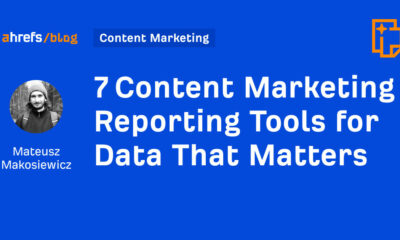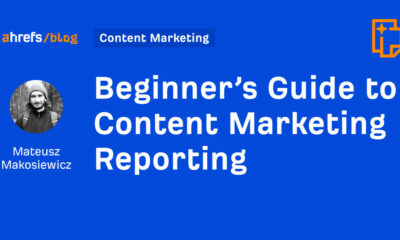Every Monday morning, two marketing groups in two different companies get a standard report.
One marketing team reads the report and then usually convince themselves that the data is wrong because their campaigns are working. What other reason could there possibly be for this quarter’s 10% growth in revenue?
The other marketing team devours the report by noting trends in web interactions, analyzing attendees’ reactions to their last podcast and checking the number of sales-closed opportunities. Their revenue is also growing by 10%.
Then, something happens (merger, stock market decline, pandemic, war – fill in the blank). Which team do you think recovers the quickest by adjusting their marketing plans?
That’s an easy question. Of course, it’s the team analyzing their data every week. They will know which market segments will be most impacted by the “event” and what tactics will need to be adjusted. They will see declines or movements in their trends, allowing them to validate their tactic changes and fluctuations in results with data.
These five steps help ensure that your data provides you with actionable information and enables you to guide your marketing efforts.
1. Start with the basics
Before you dive into your weekly or monthly marketing report, here’s what to consider as you become a better champion of reporting and analytics.
- Source: Know where you are getting your data. Your data source should include your transactions for clicks, searches, website registrations and sales interactions. A CRM system should give you numbers for marketing produced or sales accepted opportunities, closed marketing opportunities and revenue generated by account. In addition, other sources of data from SEO vendors, intent data vendors and industry-specific data suppliers should also be noted on your reports, and you should know how this data affects the numbers.
- Quality: Know what the quality of your data is at the source. The IT or data organization should provide insight into the quality of the data used, at least monthly. This is especially important if you are doing deep-dive analytics or predictions on the information. For example, if you are trying to predict which products will be selling the best in the next quarter, you will have to be assured that you have at least a year or two of good, complete and accurate data. Prediction needs solid information to predict with higher accuracy. Asking these questions of the reporting team helps:
- How many duplicates are in the data this month?
- How has the accuracy improved or declined?
- Any anomalies occurred that would prevent consistent trending? Anomalies such as product introduction, new data feeds and system changes should be noted and explored.
- Timing: Know when the data was pulled into your report. This often requires understanding the entire process, from data entry to reporting. For example, if you are collecting email addresses and permissions in one area of your business, but it takes two days to collate and make that data available in the reporting system, then you may be missing information at a crucial time. Since weekly marketing reports are primarily on what HAS happened, you need to make sure that they reflect the happenings accurately. It’s just a best practice to put a date on the data itself and the report, especially if your systems have lags in the automated processes.
Get the daily newsletter digital marketers rely on.
2. Anchor on the revenue
Both teams have the right idea about what really counts in marketing – sales. They are both looking at the company’s revenue because that is usually an overall corporate goal. But just because the revenue is on track doesn’t mean that marketing had anything to do with it. The sales team will be the first to point that out. Revenue should be the North Star for all marketers.
Analyzing where revenue comes from is one of the most important tasks of marketers. This requires some deep-dive analysis of the buyers and their transactions.
Once at a large, high-tech computer company, my team was asked to segment different products. The overall corporate belief was that small and medium businesses did not buy our high-end products. By analyzing the data, we discovered that SMBs did indeed buy our high-end products, but not as often and not directly from us. Because they needed support in implementing the products, they purchased them from a reseller or systems integrator (SI) at a premium. The two-tier distribution hid from us the fact that they were purchasing. Resellers and SIs, at the time, were not required to share end-user information.
Looking at your overall revenue and where it comes from can help you fine-tune your marketing engine. Look at regions and how they are performing. Look at products – which are moving and which are not. Evaluate purchases within industries or departments within companies.
Revenue is the goal of all marketing efforts, but many organizations struggle to link marketing to the revenue generated. A close working relationship with sales helps drive this connection.
3. Let trending tell you where you’re headed
Evaluating your marketing data over time is very important because it’s a sad fact that marketers tire of their marketing message long before our customers do. Today’s digital world adds another dimension to this, however. Marketers can often see in real-time what a customer’s reaction might be to a given message. This lulls marketers into believing that all messaging is direct and instantaneous. But unless the customer purchases because of the message and you can measure that purchase, you shouldn’t just abandon your message or strategic direction.
That means that our messaging may not immediately affect and cause a massive purchase of our products just after we drop our first campaign. It’s likely after 5 to 10 campaigns of the same message and intent – you see upward trends as your message is received, absorbed, and acted on. Therefore, looking at marketing trending is so important.
Trends can tell you if your customers are picking up on your messaging and purchasing your products or services, but they can tell you about the pace at which this is happening. This is often a good signal for marketing managers to relay to sales or service teams, to tell them when they might expect an influx of inquiries, sales, etc.
4. Evaluate tactics as a whole
Integrated marketing means your messaging and how you distribute the message are coordinated. You have many tactics: email, events, SEO, website clicks, etc. And each of these can have a multitude of additional metrics. For email alone, you can have delivery rate, open rate, click to open rate, conversion, bounces, spam complaints, etc. Although these metrics may aid in helping you to manage your efficiency, they do not always help with marketing effectiveness.
HubSpot has a great template for evaluating marketing tactics. It looks at numbers for reach across all your social sites such as Twitter, Instagram and LinkedIn, number of visitors to your sites, leads generated, customers and conversion rates for tactics. Looking at tactics as a whole can give you a much better picture of the effect of your overall efforts.
5. Pay close attention to your customer’s experience.
Fortunately, today we have systems that allow us to measure the social effect of our marketing. In other words, what are your customers’ feelings about your product or service? This data is often overlooked in marketing reporting and analytics because it is “fuzzy data” and sometimes hard to manage or interpret. However, this information is crucial.
Take, for example, Dell. This large technology company has built a state-of-the-art customer feedback center in India that monitors customer feedback constantly across the entire web. They can almost instantly tell how new products or services are being perceived and where their biggest issues are across the globe. Customer comments are aggregated for actions that are sent immediately to service representatives.
Customers are talking about your products every day. If you don’t have a way to hear those comments, you are disadvantaging your company.
Take action
The greatest lesson to take from this look at marketing reporting is that knowledge is only transformed into wisdom through use. Being a marketing expert means that you understand your metrics and the data behind them. Many marketers get lost in the number of metrics that they record. That’s where we go back to the goals and make sure that all our metrics are closely tied to the company’s goals and marketing goals. Ultimately, your reporting needs to roll up to an executive, the person most likely to be evaluating marketing overall.
Read next: How to choose a marketing analytics platform
Laura Patterson, CEO of Visionedge Marketing, a marketing metrics company, says that at the executive level, you need only a handful of core measurements that fall into these categories:
- Marketing contribution to sales
- Customer movement – acquisition, retention, value
- Efficiency improvements
- Bottom line: Marketing’s financial contribution and ROI
Carefully understanding your data, evaluating the metrics you establish for marketing, communicating the effects of those metrics and taking actions guided by them helps you as a marketer gain a strong reputation as a contributor to your company’s growth.
Opinions expressed in this article are those of the guest author and not necessarily MarTech. Staff authors are listed here.




















![How to Use AI For a More Effective Social Media Strategy, According to Ross Simmonds Download Now: The 2024 State of Social Media Trends [Free Report]](https://articles.entireweb.com/wp-content/uploads/2024/04/How-to-Use-AI-For-a-More-Effective-Social-Media.png)




















You must be logged in to post a comment Login